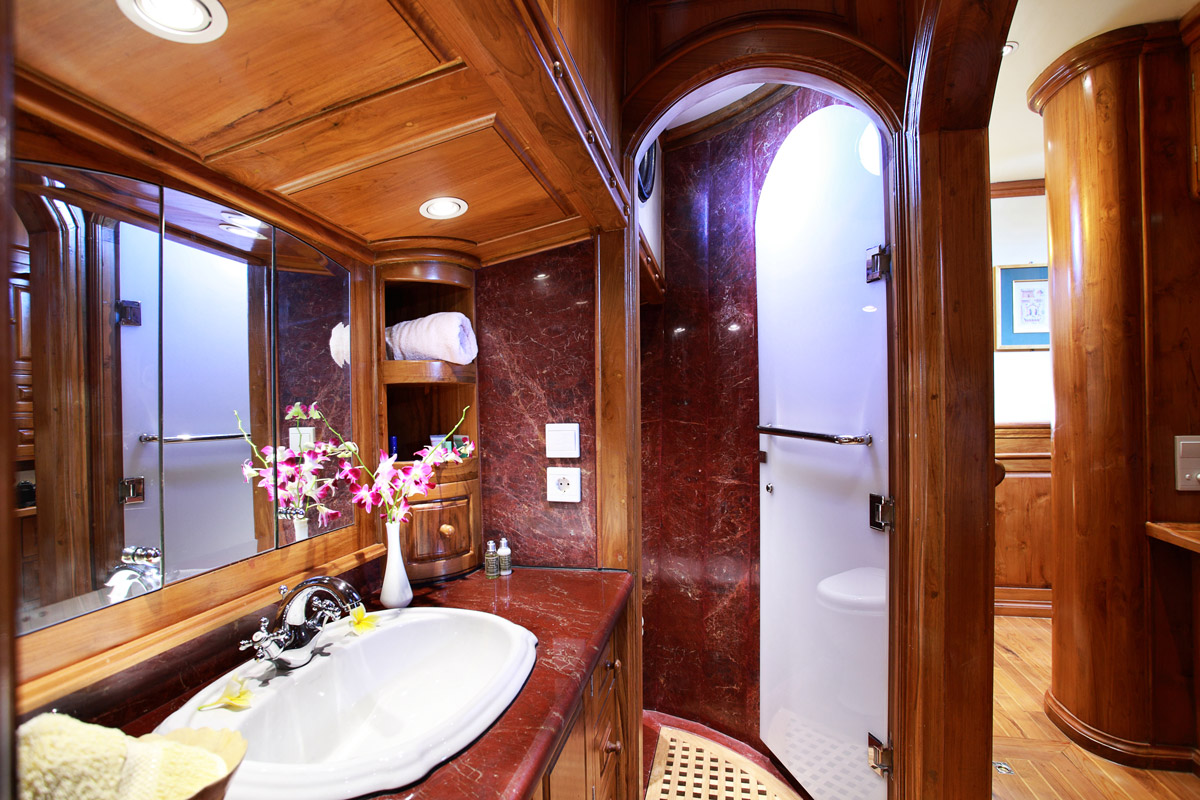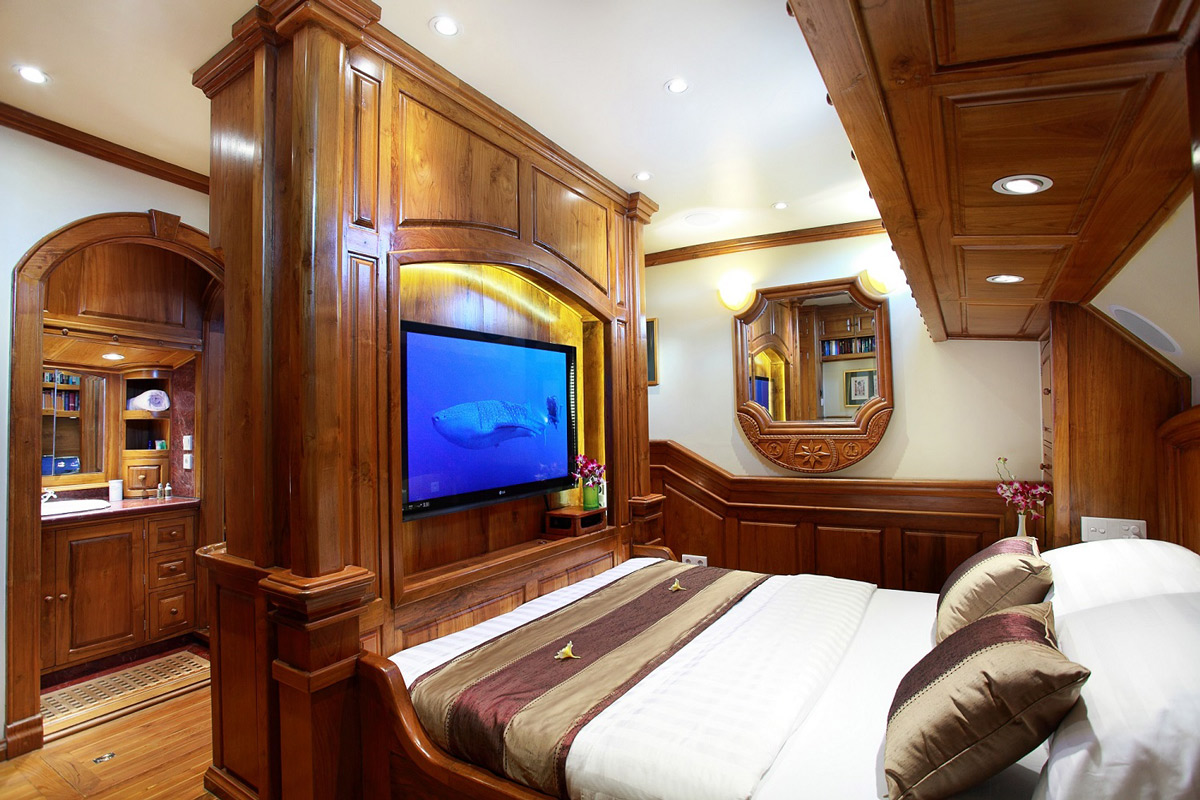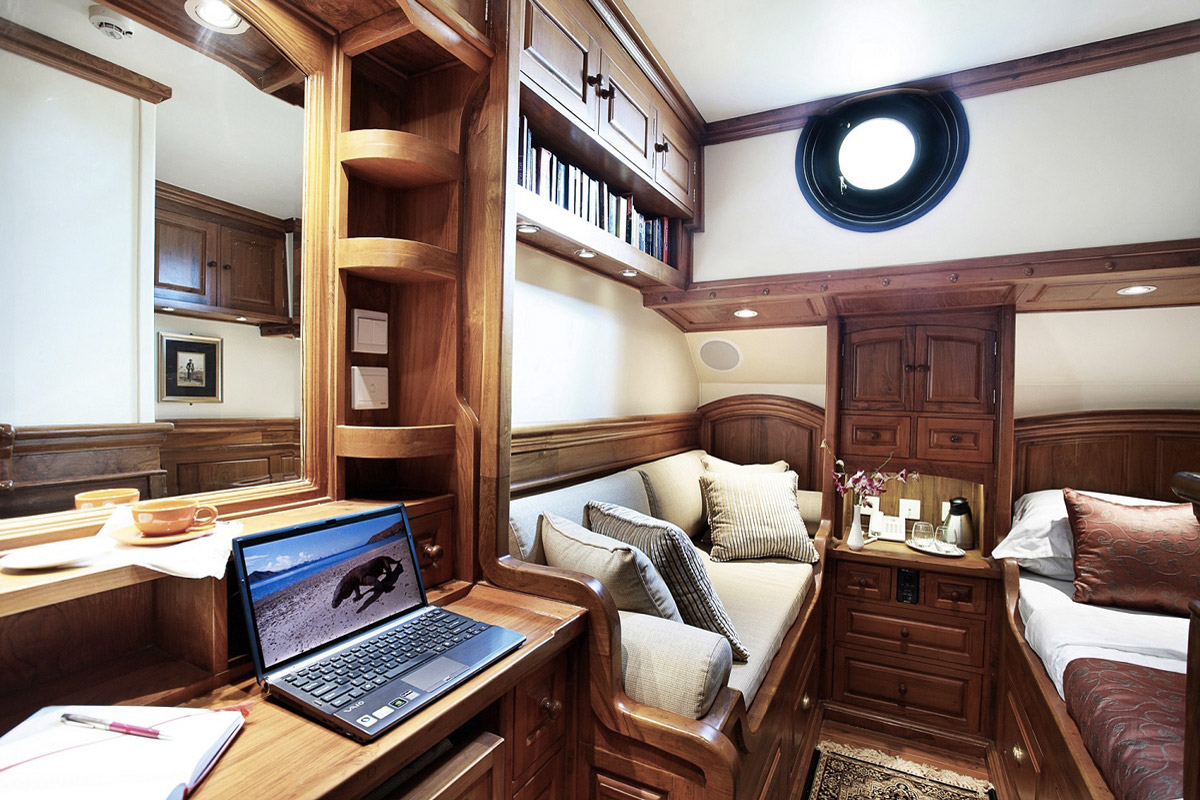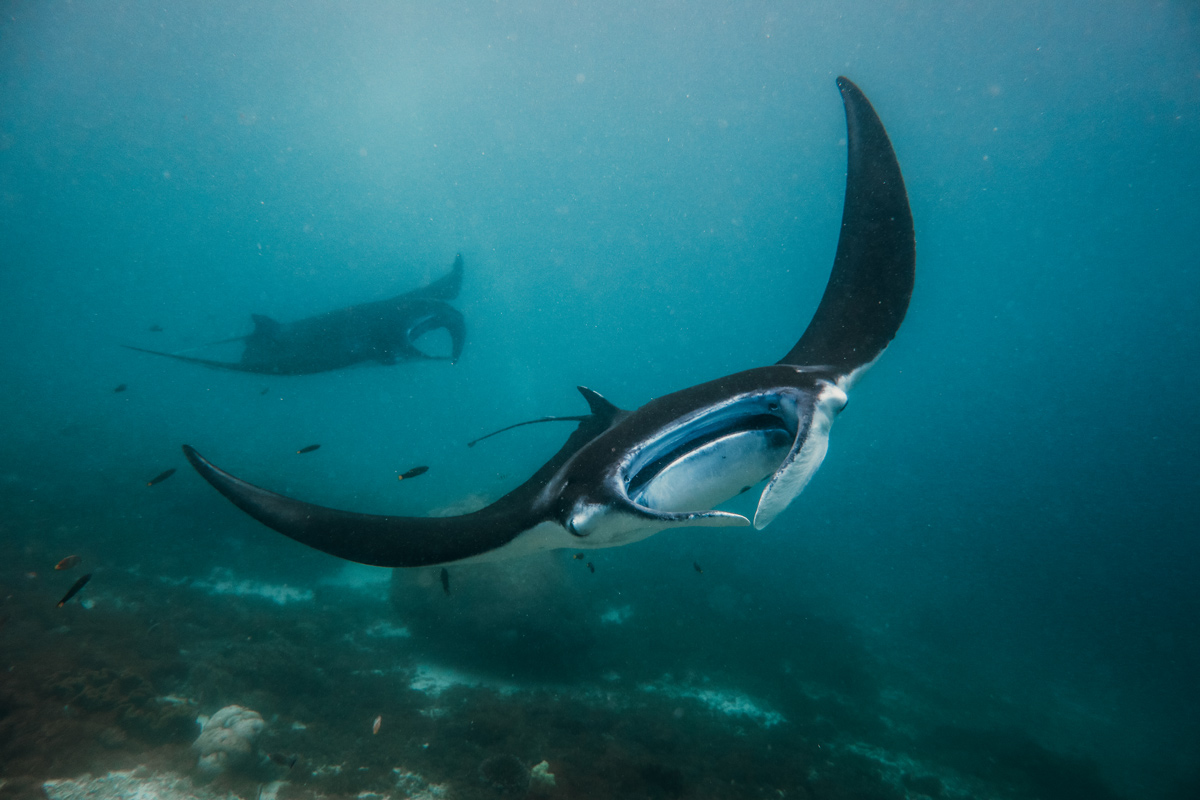Adelaar Liveaboard
Maumere-Ambon Itinerary
September 23-October 3, 2022
4825 € Per Person Double Occupancy
Think crystal clear waters, deep walls, submerged pinnacles, remote volcanos and amazingly pristine underwater reefs. Imagine big pelagics: hammerhead sharks, thresher sharks, mola molas, tuna, rainbow runners, black and white tip sharks, and maybe even a silky shark. Envision all of those small underwater treasures: frogfish, pontohi seahorses or halimeda ghost pipefish, thorny seahorses, rhinopias, frogfish, and ribbon eels.
Master Suite: accommodates 2 adults
It has a double bed (207 x 160 cm), a sofa (207 cm x70 cm) which converts in to an extra bed for twin share, 2 nightstands, 2 closets, 2 desks and plenty of storage space.
Staterooms 2 & 3: accommodates 2 adults
Each has a double bed (200 x 140 cm) and a sofa 9200 x 70 cm) which converts into an extra bed for twin share, a nightstand, a closet and plenty of storage space.
Stateroom 4: accommodates 2 adults
It has a double bed (198 x 128 cm), a nightstand, a closet and storage space (twin share not available).
All staterooms have individually controlled air-conditioning, as well as a state-of-the-art entertainment system. Guest rooms are all en-suite with Kohler wash basins, Grohe faucets, a hot water shower, and JETS vacuum toilet. Amenities from “Sensatia Botanicals” include calming shampoo, conditioner, and body wash.




DAY 1 MAUMERE
After boarding Adelaar in Maumere in the North of Flores, you will enjoy your first day on board while cruising eastwards along the Flores coast.
DAY 2 ADONARA
The submerged seamounts off Adonara are covered by a diverse mixof hard and soft corals. They provide shelter for a variety of reef fish and attract bigger predators such as jacks, tunas, and black tip and grey reef sharks. Juvenile silvertip sharks are often seen patrolling the typically clear blue water. (3 day dives)
DAY 3 PANTAR
We start the day with an adrenalin filled dive with the objective to see schooling hammerhead sharks, followed by a second morning dive on a stunning wall that is covered so completely in soft corals that we might get a sensory overload. The afternoon and night dive take place on a patch reef that is well known for harboring rhinopias. After the afternoon dive, we let the locals show us around their picturesque village. (3 day dives, 1 night dive)
DAY 4 PURA
Today’s diving takes us to a unique site that is dominated by sheerendless carpets of anemones, regularly visited by thresher sharksand mola molas. It is a spectacularly beautiful hard coral reef, where one of the attractions is observing local free-diving fishermen. The impressive big overhang hosts a variety of critters: clown frogfish, pontohi seahorses or halimeda ghost pipefish. It is very likely that Adelaar will be visited by a group of local ikat weavers, offering their beautiful fabrics for purchase. (3 day dives)
DAY 5 WETAR
After a night crossing we arrive in the morning in the Moluccas, where we
dive the walls and slopes of Reong and Wetar. Depending on theprevailing current they can be very rich in fish. Grey reef sharks, bamboo sharks, giant trevally, schooling big eyed jacks, rainbow runners and tunas are often seen here. On the quieter dives there are areas completely covered in zebra anemones. Looking closely we may spot the beautiful but rare leopard shrimp, that lives in symbiosis with them. As we start our journey into the heart of the Banda Sea, keep your eyes open for whalesthat migrate through these waters during this time of the year. (3 day dives)
DAY 6 GUNUNG API
Gunung Api means simply volcano in Indonesian. It is an old, lonely volcano that arises from the depth of the Banda sea. It attracts a huge colony of resident seabirds above the waves, while under water the island is home to schools of jacks, surgeonfish,tunas, barracudas and other pelagic fish species – as well as a lot of sea snakes. These venomous but unaggressive reptiles can be encountered on each dive around Gunung Api, sometimes in great numbers, which makes these dives absolutely unique. (4 day dives)
DAY 7 LUCIPARA MAISEL ARCHIPELAGO
The Lucipara archipelago consists of several uninhabited low profile sandy islands with lush tropical vegetation. The islands themselves are inaccessible, protected by very shallow fringing reefs that extend out several hundred meters from shore line. At the edge, these huge coral shallows plunge steeply into the typically crystal-clear abyss of the Banda Sea. Diving this remote location has by definition an exploratory character: the location in the middle of the deep sea with no other islands around, is very inviting for pelagics, thus increasing our chances of close encounters with tunas, rainbow runners, thresher sharks, silky sharks or hammerhead sharks. (4 day dives)
DAY 8 LUCIPARA PENYU ARCHIPELAGO
Another day just like the day before! Apart from the chance to see more pelagics, the general healthiness and sheer vastness of the reefs is overwhelming. Some of the walls and steep slopes are studded with luxuriant soft coral growth, in otherparts, the landscape is dominated by giant barrel sponges or immense sea fans. The shallows are mainly intact hard coral gardens inhabited by myriads of different species of reef fish. (4 day dives)
DAY 9 SOUTH AMBON
After two morning dives on the exposed south coast of Ambon island
that are both stunning from a topographical and coral cover point of
view, we enter Ambon Bay where we will go hunting for critters. Thorny seahorses, ornate ghost pipefish, rhinopias, frogfish and ribbon eels are just a few examples to illustrate the extraordinarily rich muck diving of Ambon Bay. (3 day dives, 1 night dive)
DAY 10 LAHA
Laha’s muck diving sites are world renowned. Apart from a plethora ofnudibranchs, cephalopods, ambon scorpionfish and different species of leaf scorpionfish, Laha is also famously the only place in the worldwhere – with some luck – the beautifully weird psychedelic frogfishmay be spotted. (2 day dives)
DAY 11 AMBON
After a last breakfast, it is time to say goodbye and disembark - until the next time.